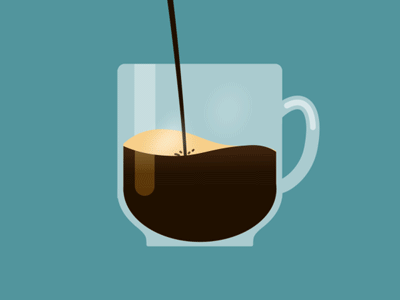 Aug 22
Aug 22 Podcast #1215: What Happened to DLNA Technology?
 On this week’s show ask the question: “What Happened to DLNA Technology” We also read your emails and the week’s news. Also, say hi to Evelyne, our virtual news reader.
On this week’s show ask the question: “What Happened to DLNA Technology” We also read your emails and the week’s news. Also, say hi to Evelyne, our virtual news reader.
| Download this Episode. |
Support the show with Patreon!
Listen to the show
Today's Show:
News:
- Plex warns users to update systems immediately after detecting worrying security issue
- Samsung’s $30K Micro RGB TV Is Here
- Sling TV launches single day, weekend, week-long pass options
- Apple’s new ‘Charismatic’ smart home OS is getting set to take on Alexa and Google
Other:
- HT Guys Music Playlist on Apple Music
- HT Guys Music Playlist on Amazon Music
- HT Guys Music Playlist on Spotify
- Ara's Woodworking
What Happened to DLNA Technology?
DLNA (Digital Living Network Alliance) technology, once a popular standard for sharing media like photos, videos, and music between devices on a home network, has largely faded from prominence.
Here's a concise overview of what happened:
- Peak Popularity (2000s–Early 2010s): DLNA, introduced in 2003, enabled seamless media streaming between certified devices like TVs, computers, smartphones, and gaming consoles. It was widely adopted by manufacturers (e.g., Sony, Samsung, LG) and supported by software like Windows Media Player. By 2010, millions of devices were DLNA-certified, with a focus on interoperability and ease of use.
- Decline in Relevance:
- Rise of Proprietary Ecosystems: By the mid-2010s, companies like Apple (AirPlay), Google (Chromecast), and Amazon (Fire devices) pushed proprietary streaming protocols that integrated tightly with their ecosystems, offering smoother user experiences and cloud-based features DLNA lacked.
- Complexity and Inconsistency: DLNA's interoperability was hampered by inconsistent implementation across devices. Some devices supported only specific file formats or had clunky interfaces, frustrating users.
- Shift to Cloud and Apps: The rise of streaming services like Netflix, Spotify, and YouTube shifted media consumption to app-based, cloud-driven platforms. DLNA's focus on local network sharing became less relevant as users prioritized internet-based content.
- Emerging Standards: Technologies like Miracast, Wi-Fi Direct, and Bluetooth offered simpler or more versatile alternatives for device-to-device connectivity, further eroding DLNA's niche.
- DLNA's End (2017): The DLNA organization officially dissolved in 2017, ending certification and development. While some devices and software (e.g., Plex, VLC) still support DLNA for backward compatibility, it’s no longer a focal point for manufacturers or consumers.
- Current Status: DLNA remains functional on older devices, but it’s largely been supplanted by modern protocols and platforms. For example, smart TVs now rely on app ecosystems or protocols like Google Cast. Some enthusiasts still use DLNA for local media servers, but it’s a niche use case.
From our archives (June 2012)
What's missing?
So if you've tried any of the DLNA servers out there, you've probably seen how bare they are. With so many consumer electronics devices supporting DLNA playback, it seems a really good DLNA server would sell like hotcakes. Here's what we think the perfect DLNA server would do.
Support Transcoding. Some DLNA Servers support transcoding, but not all of them. Transcoding allows the server to change the format of the video your watching or song you're listening to to something that the player can actually play back. Otherwise you'll get a bunch of failures trying to play back stuff like DivX and Xvid.
Support Cover Art. Most DLNA servers will just grab a video frame out of a movie file and display it as a thumbnail. Why not replace that with the actual cover of the movie? They're easy to find online. It might take a little more setup up front to get all the covers downloaded and in the right place, but it would be worth it.
Categorize videos. A few of the servers support a limited amount of categorization for video files, but what you'd really like to do is tag a movie with a genre, a year, rating, actors, director, producer, etc. and use any of those pieces of information to find the right movie.
Built-in DVD backup. Consumers want a way to backup their movies. DVDs don't last forever. Allow a user to create a backup copy of their DVD on a hard drive. Of course they'll also be able to watch it from any network connected DLNA player, but that's just a slight benefit of the nifty backup feature. Of course, if you could then provide the built-in...
Connection to IMDB. Allow users to automatically populate cover art and meta data info by selecting the correct movie from an online database like IMDB. This would greatly simplify the chore of adding movies to a video library. While this tends to be a one-time event (once per movie at least), it can be painful and tends to wear on you after a while.
Support online sources. Right now PlayOn is the only server we've found that supports online video sources. It, however, doesn't support local sources. It looks like that functionality will be coming soon, but the two ideas need to merge for a really great product.


Reader Comments (1)
the AI voice was interesting, but rather bland, as it misses the tonal inflections and pauses in natural speech. Don't think mattered if was female or male voice. Could immediately tell was computer, even though Ari wrote the whole thing to be transcribed